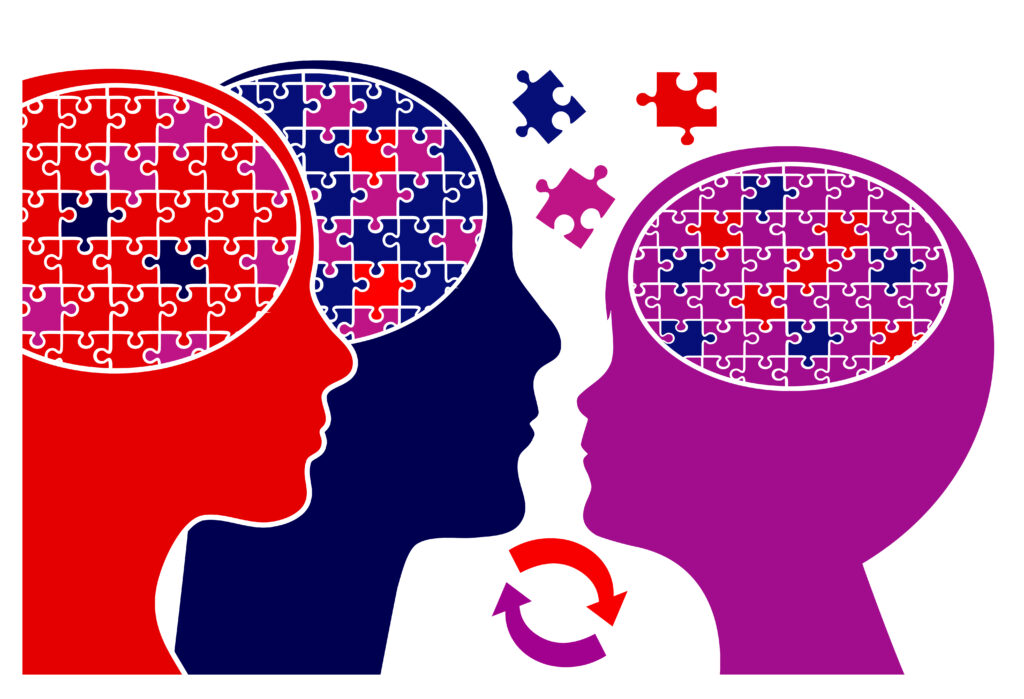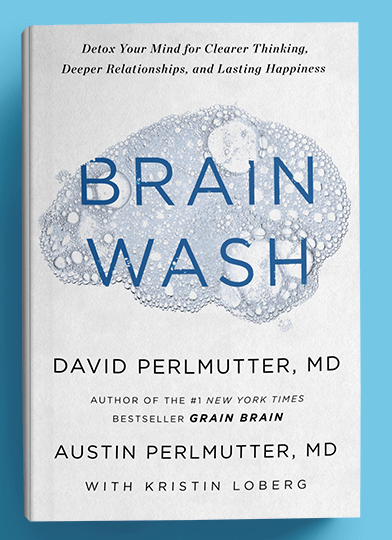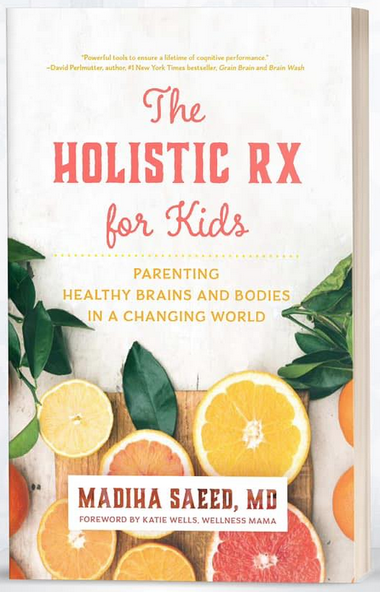
The COVID pandemic is having a huge effect on our children. We need to take it seriously.
The Children’s Hospital Association and the American Association of Pediatrics have reported a nearly 20% spike in the number of young people attempting suicide, and more than a 40% increase in behavioral issues in children since the pandemic began.
The wave of COVID stressors is playing out against an already scary baseline of physical and mental illness among young people. Consider that chronic diseases have quadrupled in kids since the 1960s. In 1994, one in eight children had a chronic condition, now 54% of American children have been diagnosed with a chronic health condition. The numbers are predicted to rise to 80% by 2025!
Not only are their bodies sicker, our children’s brains are also getting sicker. One in six American children has at least one neurodevelopmental disorder like autism, ADHD, dyslexia, specific learning disorders, communication disorders, sensory processing disorders and more.
Holistic parenting empowers and educates our children to be more aware of their minds, emotions, and physical states, so they learn when things are going out of balance, and what to do to quickly restore healthy equilibrium.
What is going on with our children? Why are they suffering so much?
By understanding the why…there lies the hope. If we can understand the root causes of this suffering we can help put our children’s brains and bodies back into balance. If we can nurture environments–internal and external–that allow our childrens’ brains to work better, we can help to lower inflammation, and that will help them make better decisions, and actually have the energy and overall health to grow into resourceful and resilient adults. There’s a lot at stake here.
Neural Connections
As is the case with adults, our kids’ behaviors and decisions–what they wear, what they choose to eat, how they feel, how they interact–are all dictated by their brains.
The human brain is an amazing organ made up of over 100 billion cells and over 50 trillion synopses. Brain development is very rapid in the womb, and continues at an accelerated rate in the first two to three years of life. It continues to sculpt itself for the next 20 years or more. But those early years are critical. Roughly 90% of the growth of the human brain occurs in the first five years of life, when millions of connections are being formed, unformed, and then reformed.
At birth, there are billions of cells but few connections. A child of one year has developed more than 1,000 trillion synapses. By the age of two, the brain wiring has become even more complex and synaptic pruning has started. A child’s caregivers can have a profound influence on how these connections are formed, for better or for worse.
Children with behavioral and emotional problems at age 8 had, at age 10, higher levels of c-reactive protein and IL-6—both of which are key markers of inflammation and inflammatory diseases in adulthood.
For decades, parenting books have identified two main regions in a child’s brain as the key players in decision-making: the prefrontal cortex and the amygdala. And there’s truth to that.
The amygdala, the reactive part of the brain, drives primitive, impulsive, fight or flight type of reactions and decisions. The prefrontal cortex, the more developed part, is responsible for rational decision-making. It examines the pros and the cons and helps children—and adults, for that matter–to think through their actions after taking a look at the whole picture.
To make good decisions about the myriad choices in life, and to form healthy habits, we all need to have both parts working well together.
Inflammation: The Brain Hijacker
In his excellent 2019 book, Brain Wash: Detox Your Mind for Clearer Thinking, Deeper Relationships, and Lasting Happiness, neurologist David Perlmutter, MD, writes: “The shift away from the prefrontal cortex represents the greatest existential threat for human survival.”

He’s writing about a general social trend away from rational, self-reflective decision-making, and toward impulsive often violent reactions. You can easily see examples of this among children and adults alike these days. It’s a reflection of our lifestyle imbalances, and at the same time, it is a driver of them.
This is especially problematic for children.
Many children’s lives are completely out of balance. Despite warnings about unhealthy diets and obesity, American kids are eating more fast food than ever before. With increased artificial/junk food consumption, limited diet variety, lack of sleep, lack of nature, lack of exercise/play, negative social environments, and increased exposures to toxins inside and outside the home, many kids are in constant states of inflammation.
Putting it bluntly, chronic inflammation hijacks a child’s brain. Studies have shown that inflammation decreases the strength of the connection between the prefrontal cortex and amygdala, predisposing kids to heightened amygdala responses when presented with something perceived as threatening.
Inflammation disrupts the connections between the prefrontal cortex and the amygdala, predisposing kids to out of control behavior. It is not their “fault,” really. These kids are unable to use their whole brains to make good decisions. The result is decreased empathy, poor relationships, and more anger, all of which fuels an “everyone hates me” mentality. It becomes a feed-forward cycle,
Behavior problems, inflammation, and physical illness are intimately connected. Children that suffer from chronic conditions are at increased risk for depression, anxiety, and emotional problems that persist beyond childhood. And vice versa.
Researchers at Harvard and Columbia followed a group of 4,000 children, and found that those with behavioral problems were at increased risk for many chronic diseases in adulthood like heart disease, obesity, and diabetes. Those with behavioral and emotional problems at age 8 had, at age 10, higher levels of c-reactive protein and IL-6—both of which are key markers of inflammation. CRP and IL-6 elevations associate strongly with inflammatory diseases in adulthood.
There are also studies showing that depressed children and teens are at increased risk for premature death, and a wide range of illnesses later in life.
These are often intergenerational patterns. Researchers have shown that brain networks in babies reflect the degree of inflammation their mothers experienced during pregnancy. High maternal IL-6 levels during gestation predict lower children’s scores on working memory tests at age 2.
Balanced Brain, Balanced Life
So how do we nurture healthy connections in our children’s brains? How do we guide them back into balance?
I like to think of it as holistic parenting.
Fundamentally, holistic parenting is all about love and connection. Every conversation with a child, every hug, every meal together, every shared activity has the power to mold our children’s brains and bodies for the better. That’s why our mindfulness, as adults, is so important.
We are mind, body, soul. So are our children. Holistic parenting can help nurture a child’s mind, body, and soul from the inside out, giving them the skills they need for emotional intelligence, enduring friendships, good decision-making, the ability to manage stress, and resilience throughout adulthood.
By far, the important ingredient for developing a healthy brain and body is LOVE. Parental love builds neural connections, releases oxytocin, and decreases stress. All of that will increase cognitive function.
Holistic parenting empowers and educates our children to be more aware of their minds, emotions, and physical states, so they learn when things are going out of balance, and what to do to quickly restore healthy equilibrium.
Mindfulness allows us to see our internal and external environments clearly, enabling us to be fully aware of many different levels of perception at once. It allows us to respond in the healthiest way to life’s various situations.
In the context of caring for young children, mindfulness is vital, because those first three years of life are so important for optimal brain development.
Early life neural patterns affect every system from learning, memory, impulse control, planning, mood, sensory systems and their everyday decisions. Holistic parenting can influence not only our childrens’ brains, but their gene expression, mitochondrial function, microbiome composition, and immune system resilience. It’s all connected!
The Microbiome Connection
There are also very practical nutritional aspects to this. Children’s brains and bodies are made from food they eat. And so many of our children are eating the wrong foods, or not eating enough of the right foods. A lot of them are routinely overeating.

Alterations in diet, along with early childhood infections, are associated with brain function abnormalities and changes in behavior. Some of this is mediated by the microbiome.
A 2020 study, shows that the infant gut microbiome undergoes dynamic changes in the first 36 months of life. During the first three years of life, the development of the microbiome is influenced by neonatal and maternal exposures, diet, lifestyle and our children’s environment that play a major role in shifting of the gut microbiota in early life. The diversity of the microbiome is key to determining the health of your child’s brain, body and behavior.
Again, there may be intergenerational patterns in play when it comes to a child’s microbiome composition. There are studies showing that dysbiosis of the maternal gut microbiome in response to changes in stress can affect, not only the child’s microbiome, but also the brain and behavior.
On the other hand, a thriving microbiome promotes learning, memory, good behavior, and good mood.
During the first three years of life, the development of the microbiome is influenced by neonatal and maternal exposures, diet, lifestyle and our children’s environment that play a major role in shifting of the gut microbiota in early life.
And studies have shown that kids who–to borrow nutrition researcher Deanna Minich’s phrase–“eat the rainbow” of whole foods, packed with color, fiber, nutrients, minerals, good fats actually have healthier brains, healthier bodies and less violent behavior.
Reducing Toxins & Stress
Pesticides and other environmental toxins can lead to neurodevelopmental damage while disrupting the endocrine system. To optimize children’s brain and body function, we need to do all we can to lower the toxin loads they carry.
It begins by minimizing exposure to herbicides, pesticides, food additives, heavy metals, and toxic household products. But it is equally important to incorporate foods that will help their bodies detoxify, and keep their bodily fluids moving.
A 2020 study from the Stanford University School of Medicine showed that in chronically stressed or anxious children, the brain’s fear centers in the right amygdala send signals to the decision-making prefrontal cortex that make it harder to regulate negative emotions.
Our children are living in a world of chronic stress, their young minds constantly going, and so frequently exposed to negative messages. All of that, coupled with a lack of exercise and a lack of impressions from the natural world, leads to anxiety, sleep problems, impaired cognitive function, and social difficulties.
Chronic stress can disrupt the gut microbiome. It also kills brain cells in the prefrontal cortex while making them grow in the amygdala.
A 2020 study from the Stanford University School of Medicine showed that in chronically stressed or anxious children, the brain’s fear centers in the right amygdala send signals to the decision-making prefrontal cortex that make it harder to regulate negative emotions.
For optimal stress management, it is so important that children feel safe and secure, that they have clear structures and rules, and that they spend time in nature. Household chores are also important for building a sense of responsibility and independence. But kids also need plenty of unstructured play and exercise time.
Sleep is Medicine
Good sleep is so essential for children. During sleep, a child’s body lowers overall inflammation, releases hormones to help growth and tissue repair, increases white blood cell production, and directs blood flow into developing muscles.
Sleep is also when the body rebalances ghrelin and leptin, thus regulating appetite, and optimizing detoxification. Good sleep supports memory, learning, and immune system resilience. It is important for children to have healthy sleep routines and an environment conducive to sleep.

But by far, the important ingredient for developing a healthy brain and body is LOVE. Parental love builds neural connections, releases oxytocin, and decreases stress. All of that will increase cognitive function. Love and secure attachments strengthen the body, help regulate emotions, attention, and behavior, fostering lifelong healthy development.
Science has proven that gratitude and optimism strengthen the connections between the amygdala and prefrontal cortex. In a world of negativity, it is vital to “train” our subconscious minds to be more positive. Incorporate words of gratitude, appreciation, and encouragement when communicating with children. Teach forgiveness and support their search for purpose and meaning.
When a child’s life is balanced, all of humanity benefits. When a child’s life is imbalanced, humanity is at a loss. By focusing on the key foundations of holistic parenting, we will be able to help our children thrive and make better, everyday decision, for themselves and for the planet.
END
Madiha Saeed, MD is a holistic family physician in Naperville, IL. She trained at National University of Science and Technology and completed her residency in 2010 at St. Joseph Regional Medical Center. She is board certified in both Family Medicine and Integrative Holistic Medicine, and has a particular passion for women’s’ health and family health issues. A busy mother of four young boys, Dr. Saeed shares her “walk the talk” lifestyle tips and her “bring it on” spirit with families worldwide via her HolisticMomMD website. She is the author of, The Holistic Rx: Every Patient’s Guide to Healing and Preventing Chronic Disease, a children’s health book series called Adam’s Healing Adventures, and her most recent projects, The Quranic Prescription and The Holistic Rx for Kids.







